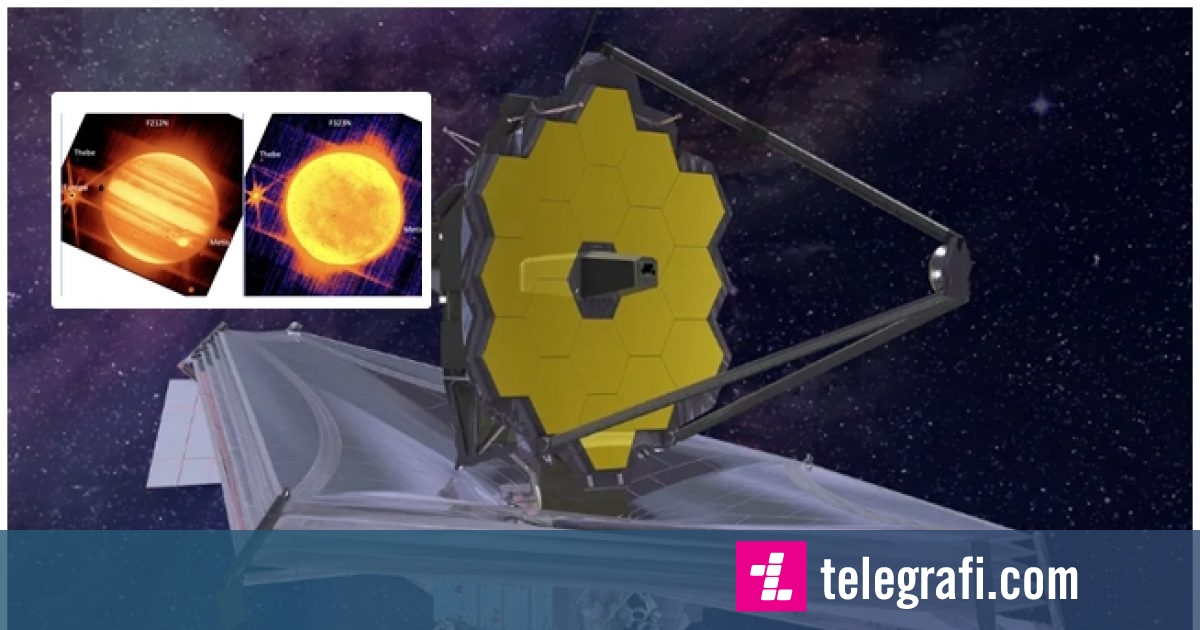People around the world were able to see the first set of color photographs taken by NASA's James Webb Space Telescope (JWST). But what space enthusiasts managed to dig up among the published photos and documents, and which may have gone unnoticed by many, are two completely new photos of Jupiter.
Fascinating images of the gas giant, the closest to Earth in our solar system, were captured by the James Webb telescope as it underwent testing.
The images show Jupiter's rings as well as its three moons – Europa, Thebes and Metis.
Europa's shadow can also be seen in the image labeled F212N, right next to the Great Red Spot.
The Great Red Spot is a long-lived storm system located 22 degrees south of Jupiter's equator, producing winds of up to 432 km/h.
The new images of Jupiter were taken with an infrared camera (NIRCam), and each one uses a different filter to highlight specific wavelengths of light.
The report said the images "showed that JWST can track moving targets even when there is scattered light from the bright Jovian planet."
Jovian means "like Jupiter" and describes Jupiter, Saturn, Uranus and Neptune,
skynews
reports .
NASA has chosen nine targets to test the telescope's ability to track fast-moving objects.
Other onboard instruments tested include the Near Infrared Imager, the Slitless Spectrograph (NIRISS) and the Mid-Infrared Instrument (MIRI), which detect and stabilize different wavelengths.
Jupiter was the slowest target, but all tests were successful.
These images also show its ability to capture details such as rings and moons around bright planets.
The report says the James Webb Space Telescope is designed “to enable fundamental advances in our understanding of the formation and evolution of galaxies, stars and planetary systems.
Now we know for sure that this will be the case".
The release of the photos marks the start of scientific work with Webb, the largest and most powerful telescope launched into space.
The James Webb Telescope was launched on December 25 on an Ariane rocket from the European Space Agency's Kourou Space Center in French Guiana.
Scientists hope the telescope's pictures will provide insight into the period immediately after the Big Bang about 13.8 billion years ago.
Webb's development took about 30 years and cost about $10 billion.
It is the successor to the Hubble telescope, which has been in use for more than 30 years.
/Telegraph/
